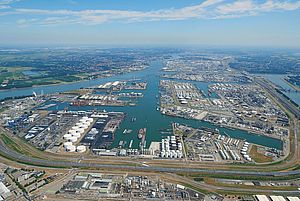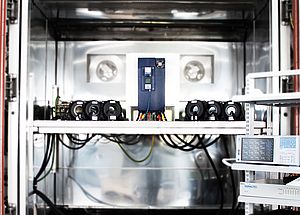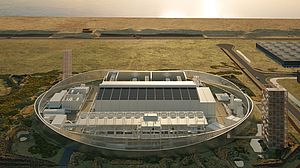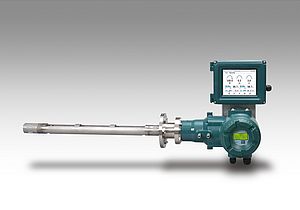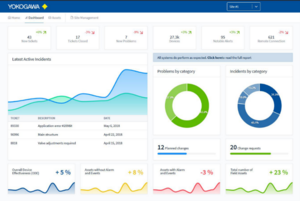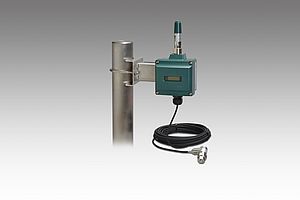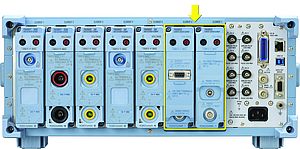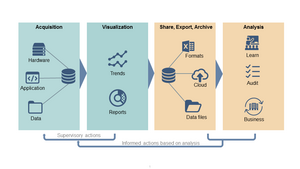Yokogawa Europe B.V. announces that VdS, a leading independent certification institution in Germany, has renewed the certification of the Yokogawa DTSX1 Fiber Optic Heat Detector for European Standard EN 54-22 under approval No. G 220001. The EN 54-22 standard applies to resettable line-type heat detectors consisting of a sensing element using a fiber optic cable for use in fire detection and fire alarm systems installed in and around buildings and other civil engineering works.
The DTSX1 is a temperature monitoring system that uses fiber optic cable as temperature sensors. It quickly and precisely detects high heat over a wide area, 24 hours a day, 365 days a year with no blind spots. Also, the ability to configure the alarm display and sound individually to suit any application enables rapid detection, localization, and identification of abnormalities. This prevents heat-induced equipment failures and abnormalities, as well as fire incidents that may result from them.
Currently, several projects implementing the DTSX1 system are being carried out, through channel partners, for road tunnels in progress in the Netherlands and Germany. In a unique project in Turkey for the metro and high-speed train, which travels 240 km and passes through 15 tunnels, the DTSX1 fire detection system was installed.
With the renewed certification, the following functionalities have been added to the certificate:
• Classes A2N, BN & CN, in addition to the already existing A1N class, for the Heat Response class. The fire detector instantly triggers an alarm if the rise exceeds the predefined limit described in the EN54-22 classes table. More classes offer the possibility of a better choice of the right alarm levels.
• The fiber optical cable length was extended from a maximal 10 km to 16 km for every channel. The DTSX1 is among the first certified solutions that can handle 4 channels and up to 16 km of optical fiber for every channel. This makes it possible to cover longer fiber cables without the need for additional control units, resulting in a cost-saving.
• More types of fiber optic cables can be used. The DTSX1 already had integrated the normal Flame Retardant Non-Corrosive (FRNC) cable, and now it offers the possibility of using a Robust cable. This Robust armored fiber optic temperature sensing cable has stainless steel loose tube, armoring wires, and FRNC outer cover. Both cables are tested and part of the EN54-22 certification.
With the latest EN54-22 certification, the DTSX1 can be used as RLTHD (Resettable Line-Type Heat Detectors) in a wider range of fire detection applications.
Product Features
The Yokogawa DTSX1 fiber optic heat detector, an OpreX™ Field Instruments heat sensing and fire detection solution, is housed in a compact enclosure and suitable for use with Yokogawa-specified fiber optic cables. The DTSX1 is an all-in-one facility monitoring and fire detection solution.
It is expected that this solution will aid in the timely identification of maintenance issues and thereby improve plant uptime and reduce maintenance costs. The DTSX1 Fiber Optic Heat Detector is designed to withstand the effects of dust, corrosion, heat, smoke, vibration and exhaust gases in industrial environments.
All DTSX1 components, including an easy-to-read display, relay output circuits, alarm circuits, and other hardware required for heat detection, are housed in a single enclosure measuring 50 cm (W) × 50 cm (H) × 25 cm (D). It has a small footprint, and it is wall-mountable. The DTSX1 is easy to install, takes less time to install, and costs less than a general-purpose fiber optic temperature sensor.
Along the length of the fiber optic sensor cable up to 1,000 alarm zones can be defined. In total, 4 fiber optic sensor cables with a length of up to 16 km each can be connected. The high-performance DTSX1 has a measurement period of only 5 seconds for each fiber.
Applications & major target markets
The DTSX1 fits the use for fire detection in service tunnels, fire detection in traffic tunnels and other infrastructures, warehouses and production facilities, li-ion battery storage facilities, car parks, cable trays & bus bars, or conveyor belts
More information at this link.






